In 2025, many security teams face a stark reality: they are being asked to manage increasing workloads with dwindling resources, all while threats and breaches continue to multiply. When a critical vulnerability or incident arises, these teams often find themselves working around the clock. The result is an unsustainable cycle that erodes both their effectiveness and well-being.
In addition, imposter syndrome is alarmingly prevalent among cybersecurity professionals. A survey by Careers in Cyber found that over 58% of professionals in this field experience persistent self-doubt and feelings of inadequacy despite their achievements.
On top of this, the tight-knit and highly skilled nature of the community often exacerbates these feelings, as comparisons with peers can intensify self-doubt. While camaraderie is one of the profession’s greatest strengths, the pressure to measure up can be overwhelming.
All this can contribute to a high rate of burnout. In fact, nearly half – 46% – of security professionals who leave their roles point to burnout as the primary reason. These departures don’t just represent lost talent; they create critical gaps in institutional knowledge and security coverage, leaving organizations more vulnerable to threats.
The good news is that companies can take meaningful steps to support these teams. By focusing on sustainable practices that place people and security on equal footing, they can create a healthier, more effective environment for their teams.
How Companies Can Empower Teams and Reduce Stress
To tackle these challenges head-on, organizations need to build balance and resilience within their cybersecurity teams. Here are three important strategies for doing this.
#1: Encourage Boundaries Between Work and Real Life
It’s time to stop treating exhaustion as a badge of honor and prioritize real work-life balance. Flexible schedules, clear on-call boundaries and access to mental health resources can reduce stress and boost well-being and professional effectiveness.
Leadership sets the tone and should lead by example. Company leaders can address stressors before they overwhelm teams by fostering open communication, transparency and regular check-ins. Creating an environment where employees feel encouraged to disconnect without fear of falling behind is essential for building a sustainable, productive workplace culture. Some other examples from industry leaders include:
- A monthly mental health stipend for flexibility in choosing what works best for them.
- Access to newsletters, webinars and podcasts exploring related topics like stigma, relationships, anxiety, balancing work and life, homeschooling and staying connected.
- Ensuring employee benefits include counseling, life coaches and even gym memberships.
#2: Invest in People
Remember the excitement of starting in tech? That spark can stay alive by focusing on meaningful growth—sharpening technical skills, developing leadership and improving communication and time management.
Ongoing training builds confidence and reduces burnout by providing purpose and preventing stagnation. Including mental health training such as Mental Health First Aid also helps foster a supportive, balanced culture. Mentorship programs help spread knowledge, lighten workloads and encourage collaboration. Growth can drive continued success, but it should empower employees and not feel like another task.
#3: Automate, Automate and then Automate Some More
Let’s face it—no one gets into tech to do repetitive tasks, but time after time, we find ourselves doing them no matter our role. Automated tools can take over the more mundane work, handling routine alerts, streamlining incident response and neutralizing low-level threats. This process lightens workloads and reduces cognitive strain by cutting out repetitive, time-consuming work. As a result, teams can focus on critical thinking, problem-solving and strategic initiatives that genuinely add value.
Make Self-Care Part of Your Security Stack
While tackling mental health challenges in cybersecurity often requires support at the organizational level, it also requires individuals to set boundaries and take ownership of their well-being. Here are three tips to help individuals set themselves up for success:
1.Take Breaks: Take regular breaks to disconnect and recharge. Even a short walk or a few minutes of mindfulness can make a significant difference. Leaders can model this behavior by stepping away themselves, signaling to their teams that well-being is a priority.
2.Move Your Body: Exercise is a proven stress reliever. Take advantage of gym memberships and wellness programs, or encourage daily movement. Teams can also engage in group activities like step challenges to build camaraderie while promoting health.
3.Normalize Seeking Help: Make mental health support a regular part of professional life. Talk to a therapist or access resources offered by your organization, but also consider creating mental health channels in security-related Discord and Slack groups. Scheduled check-ins with friends—whether by phone, video or in person—can provide important moments of connection, especially on busy days.
Here are some resources for support:
The National Alliance on Mental Illness (NAMI)
The American Foundation for Suicide Prevention (AFSP)
American Psychiatric Association’s Resources for Employers
It’s Time to Break the Cycle
In 2025, the mental health of IT and cybersecurity professionals must be a priority. By investing in automation, tools, training and workplace culture, organizations can break the burnout cycle and empower teams to maintain a strong security posture. A healthy, supported team is not just an asset—it’s essential in the fight against cyber threats. Balance is key, and seeking help is a strength. Together, we can create a future where cybersecurity professionals thrive, strengthening and securing organizations.
Amanda Berlin
Amanda Berlin is senior product manager of cybersecurity at Blumira, where she leads the development of new detections based on threat intelligence and research. An accomplished author, speaker and podcaster, Amanda is known for her ability to communicate complex technical concepts in an accessible and engaging way for audiences of all backgrounds. She co-authored the O’Reilly Media book Defensive Security Handbook: Best Practices for Securing Infrastructure and is also the co-host of the Brakeing Down Security podcast. Amanda is the CEO and co-founder of Mental Health Hackers, a non-profit organization that raises awareness about mental health issues in the cybersecurity community.






















